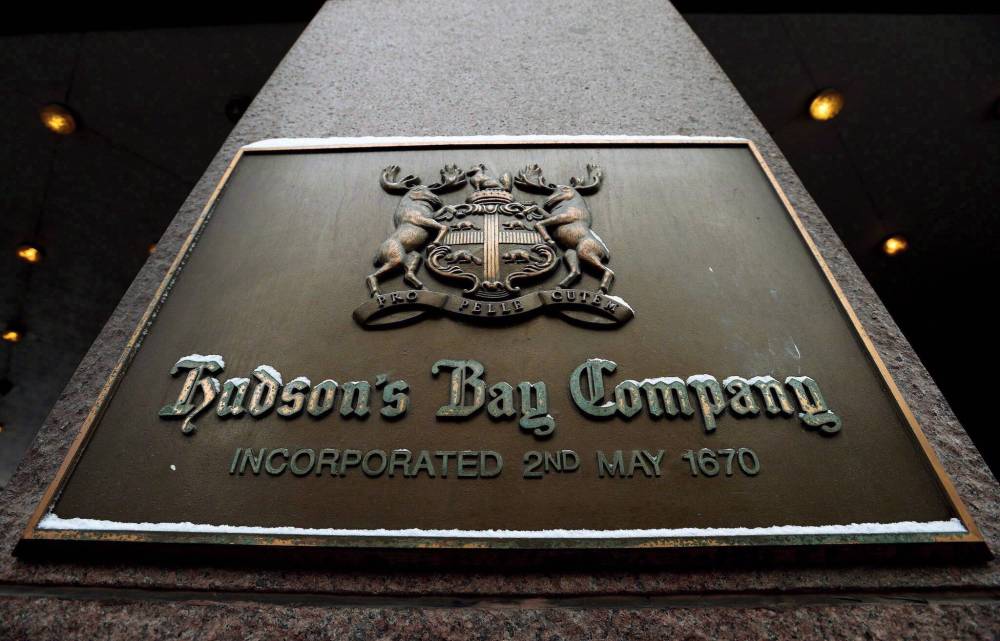The Bay — a piece of history becomes history
Advertisement
Read this article for free:
or
Already have an account? Log in here »
To continue reading, please subscribe:
Monthly Digital Subscription
$1 per week for 24 weeks*
- Enjoy unlimited reading on winnipegfreepress.com
- Read the E-Edition, our digital replica newspaper
- Access News Break, our award-winning app
- Play interactive puzzles
*Billed as $4.00 plus GST every four weeks. After 24 weeks, price increases to the regular rate of $19.00 plus GST every four weeks. Offer available to new and qualified returning subscribers only. Cancel any time.
Monthly Digital Subscription
$4.75/week*
- Enjoy unlimited reading on winnipegfreepress.com
- Read the E-Edition, our digital replica newspaper
- Access News Break, our award-winning app
- Play interactive puzzles
*Billed as $19 plus GST every four weeks. Cancel any time.
To continue reading, please subscribe:
Add Winnipeg Free Press access to your Brandon Sun subscription for only
$1 for the first 4 weeks*
*$1 will be added to your next bill. After your 4 weeks access is complete your rate will increase by $0.00 a X percent off the regular rate.
Read unlimited articles for free today:
or
Already have an account? Log in here »
Hey there, time traveller!
This article was published 24/03/2025 (192 days ago), so information in it may no longer be current.
Some view it as lamentable. Others see it as simply inevitable. In truth, the recently accelerated demise of the Hudson Bay Company’s last remaining department stores is full measures of both.
While Canadians of a certain vintage might be inclined to mourn the passing of this country’s last old-school retail giant, the fact of the matter is that “the Bay,” as it is colloquially known, has been on its last legs for almost as long as can be remembered by most folks who could accurately be described as middle-aged.
And the primary reason for the final farewell of the company whose circa-1670 roots are embedded in Canada’s colonial fur-trading past is that the vast majority of shoppers who are now saddened by its end long ago stopped patronizing the place.

Nathan Denette / The Canadian Press
A Hudson Bay Company store in Toronto.
Times changed, and consumer behaviour changed with them. Urban sprawl pushed retail activity out of the downtown cores where stores such as Eaton’s and the Bay were the anchors of busy commercial strips that were regular destinations for folks from every neighbourhood. Massive, sleek suburban shopping malls, offering free parking and an indoor retail experience, supplanted urban high streets and their mammoth limestone monuments to 20th-century commerce.
In many cities, including Winnipeg, the mass exodus from downtown turned once-prosperous avenues into blighted stretches on which boarded-up storefronts became shelter nooks for a growing population of the homeless and afflicted. This city’s downtown, except on nights when sports or entertainment draw crowds to Canada Life Centre, is a place most suburbanites wittingly avoid.
The Bay and other department stores attempted a transition away from downtowns, becoming anchor tenants in the aforementioned suburban malls, but time and tendencies overtook them there, as well. Shoppers no longer favoured the everything-under-one-roof approach; instead, specialty stores gained favour and, eventually, consumer behaviour mutated again as the online version of retail offered greater selection, better deals and the opportunity to acquire pretty much anything without ever having to leave the house.
The department-store giants were doomed — Eaton’s fell first, then Sears; the Bay lingered, even as it languished, and through its last decade its eventual demise was a question of when, rather than if.
And now, after filing for creditor protection and then failing to find lenders willing to provide the funding needed to finance the necessary restructuring, the deeply indebted retailer is liquidating assets and closing most or all of its 80 remaining stores. A Hail-Mary of sorts by the company’s lawyers this week sought an extension on formal approval of the Bay’s liquidation plan while last-ditch talks continued with stakeholders that might make it possible for a few stores — six, located in Ontario and Quebec — to remain open.
But even that, if granted, would amount to a brief reprieve rather than meaningful relief. The Bay’s approach to retailing is a remnant of a bygone era, and there’s nothing the company could do to make its name, or whatever its reconfigured commercial strategy turned out to be, relevant against 21st-century businesses whose very foundations — virtual, not bricks and mortar — are defined by the online realm in which they’re designed to flourish.

Christopher Katsarov / The Canadian Press
Empty shelves at a Hudson’s Bay in Toronto.
As has been pointed out elsewhere in these pages, there’s an undeniable irony in the sudden rush to snap up bargains and Bay-themed artifacts during the store’s current liquidation: those saddened shoppers jostling their way through hastily assembled throngs of like-minded souvenir hunters were looking to acquire, at deep discounts, items they would never having considered buying at their regular price.
Sadness over the demise of the Bay is nostalgia, plain and simple. The inevitability of its end is a matter of incontrovertible economic reality.



